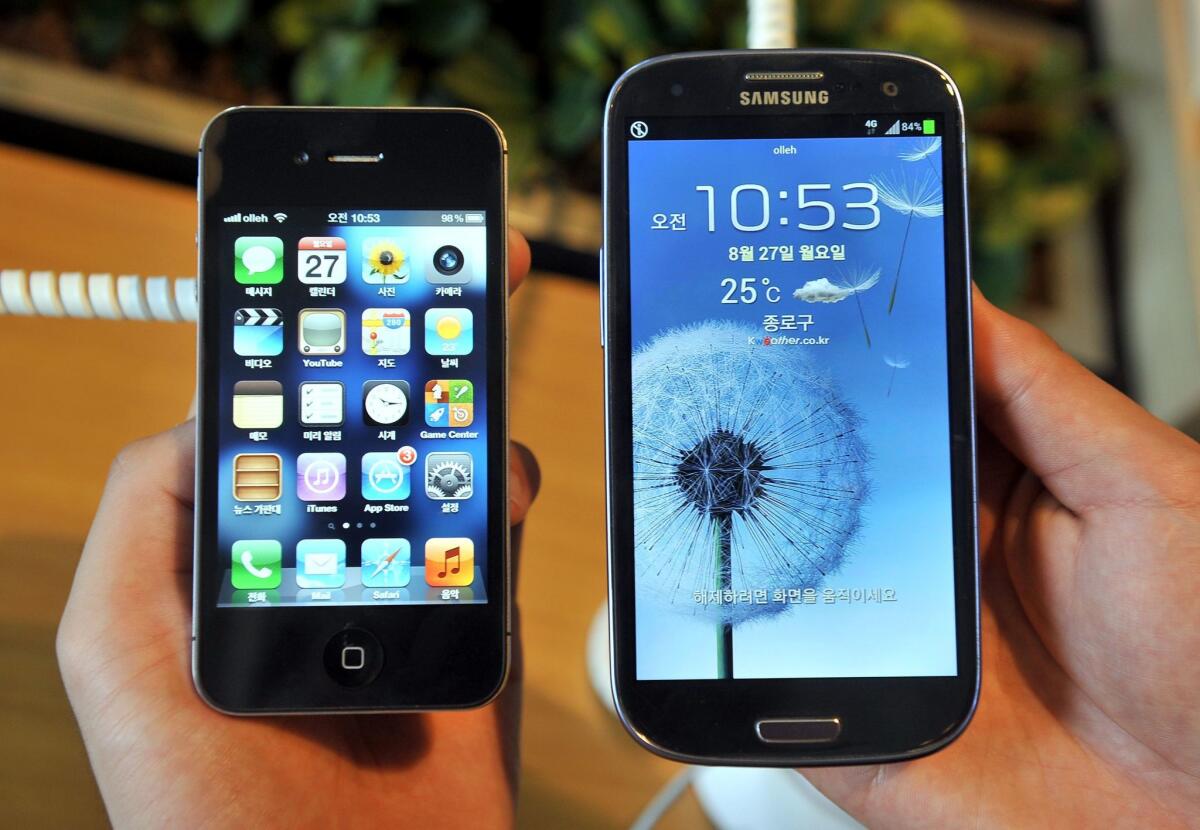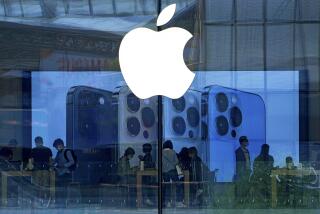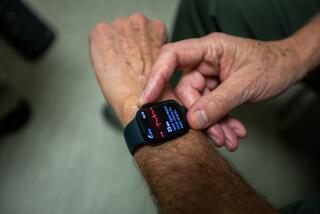Supreme Court: Samsung doesn’t owe Apple $400 million for copying iPhone look

- Share via
Reporting from WASHINGTON — The Supreme Court on Tuesday ruled for Samsung Electronics in a bitter smartphone patents dispute with Apple and set aside a $400-million damages verdict for copying the look of the iPhone.
But the decision doesn’t close the years-long, multi-lawsuit fight between the world’s two most popular smartphone makers. The high court did not decide on the proper amount Samsung owes Apple. Instead, the justices sent the case back to an appeals court to decide on how much the design features contributed to the value of the iPhone — and that ruling could spur further litigation.
A federal jury in San Jose had found in 2012 that Samsung copied several features of Apple’s patented design, including the iPhone’s rounded corners, rectangular body and grid of apps on the home screen. It’s unclear how much those design choices affected shoppers’ mindsets. But Samsung started gaining customers in the late-2000s from brands like Nokia, BlackBerry and Apple as its Galaxy line of phones started more closely resembling the iPhone.
A judge said the South Korean firm should pay out its “entire profit” from the sale of its infringing smartphones, relying on patent law from 1887. The $399-million award to Apple, based in Cupertino, Calif., was upheld by a federal appeals court.
But Kathleen M. Sullivan, Samsung’s lawyer and a former Stanford Law School dean, told the Supreme Court in October that thousands of technological features influence smartphone buyers. Drawing a comparison, the company argued that an automaker shouldn’t be able to capture all of a rival’s profits for a certain car just for copying the design of a patented cup holder.
The justices agreed 8-0. They rejected Apple’s arguments to stick to previous interpretation of the old law, saying the lower court wasn’t bound to considering an entire product in calculating damages.
In a brief opinion, the justices said the design features of the smartphones, including their rectangular shape, were a “component” of the device, not the entire device. Therefore Samsung could be forced to pay a lesser amount for copying the look of Apple’s iPhone, the court found. But the justices didn’t offer guidance on how to decide whether the entire device or a part is the best measure.
The first Supreme Court case in 120 years to deal with design patents, the dispute had drawn attention across the business world.
Silicon Valley companies and the Justice Department backed Samsung, warning that companies could be held broadly liable for what they deemed minor infringement. The large award against Samsung prompted concerns that holders of design patents — traditionally a subject of less litigation than function-based patents — would be newly powerful.
But other firms, including footwear manufacturers Crocs and Nike and sunglasses maker Oakley, voiced support of Apple and the importance of protecting distinctive appearances.
Outside of the contested penalty, the case hasn’t had a major effect on Samsung. It’s continued to sell smartphones in the U.S. and now commands about a fifth of the global market for the gadgets, according to the most recent quarterly data from research firm IDC. Apple accounted for about 13% of smartphones sold. Both companies’ smartphone divisions are major producers of profit, to the tune of billions of dollars a year.
ALSO
Supreme Court affirms broad reach of insider-trading laws
When it comes to screen attachment, it’s not just the kids
Facebook, Microsoft, Twitter and YouTube team up to fight terrorist propaganda
UPDATES:
1:25 p.m.: This article was updated with more background on the case.
8:35 a.m.: This story was updated throughout with staff reporting.
This story was originally published at 7:35 a.m.








